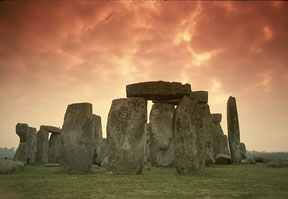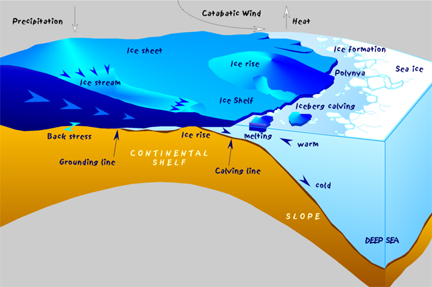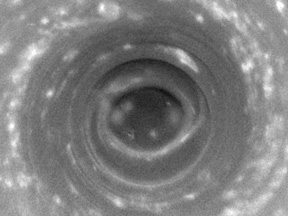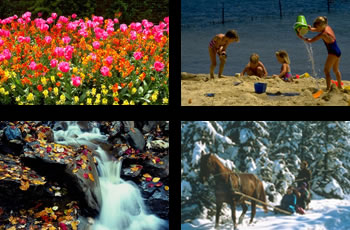The landscape and weather change greatly during the year in regions that have four distinct seasons.
Click on image for full size
Images Courtesy of Corel
What Causes the Seasons?
Let's get rid of some common misconceptions about the seasons. The
Earth's orbit is in the shape of an ellipse, so that sometimes the
Earth is a little bit closer to the Sun than at other times. Is this
the cause of the seasons?
You can imagine that if the seasons were caused by the Earth's orbit,
people in the northern hemisphere and people in the southern
hemisphere would have the same seasons.
For example, if winter
occured because the Earth was far away from the Sun, everyplace on the
Earth would be cold at the same time.
But this is not what happens! Summer in the northern hemisphere
occurs at the same time as winter in the south, and vice-versa. It
turns out that the Earth's orbit is nearly perfectly circular, and the
difference between its closest point and its furthest point is very
small. In fact, the Earth is furthest away from the Sun in June when
it is summer in the northern hemisphere.
The Earth is a very special planet in many ways. Just as Earth's
unique atmosphere and its distance from the Sun work together to make
Earth the right temperature to support life,
Earth's orbit and its rotation work together to create the
seasons.
You might also be interested in:

NASA's Earth Observatory has recently started making images of the entire surface of the Earth every month. There are no clouds in the images because they combine many pictures taken at different times
...more
"The movements of the heavenly bodies are an admirable thing, well known and manifest to all peoples. There are no people, no matter how barbaric and primitive, that do not raise up their eyes, take note,
...more
You may have heard people refer to a Full Moon in the autumn as the "Harvest Moon" or the "Hunter's Moon". Native Americans in the eastern and northern parts of North America had special names for the
...more
Antarctica is the southernmost continent on Earth, and since it’s home to the South Pole it is probably no surprise that the weather here is very cold—in fact, Antarctica is quite a bit colder than even
...more
Hello Everyone! We are not in Antarctica yet - but we are getting closer! We are now in Christchurch, New Zealand. We still have to get all our Extreme Cold Weather Gear from the Clothing Distribution
...more
Long after the VOCALS campaign is completed, the scientists’ work will continue. They must process, review, and study the data to determine what has been learned. Many model runs will be made and analyzed.
...more
Saturn's South Pole is an extremely stormy and surprisingly warm region. A vast, hurricane-like storm centered on the South Pole dominates the area. Astonishingly, the pole is also warmer than any other
...more















